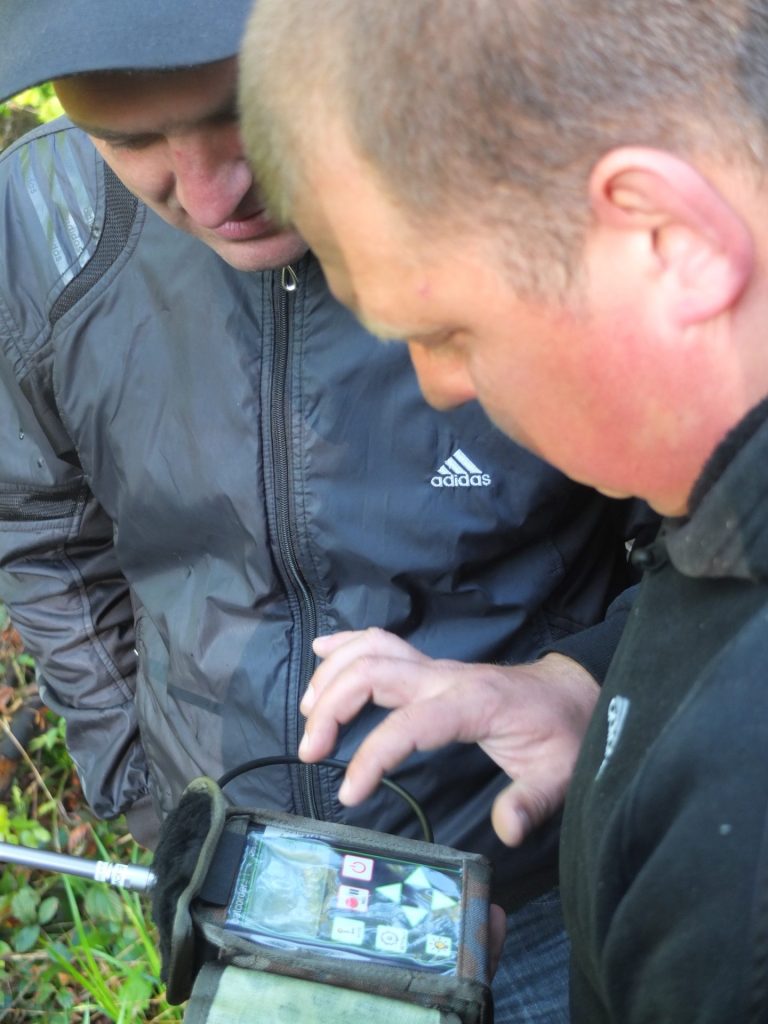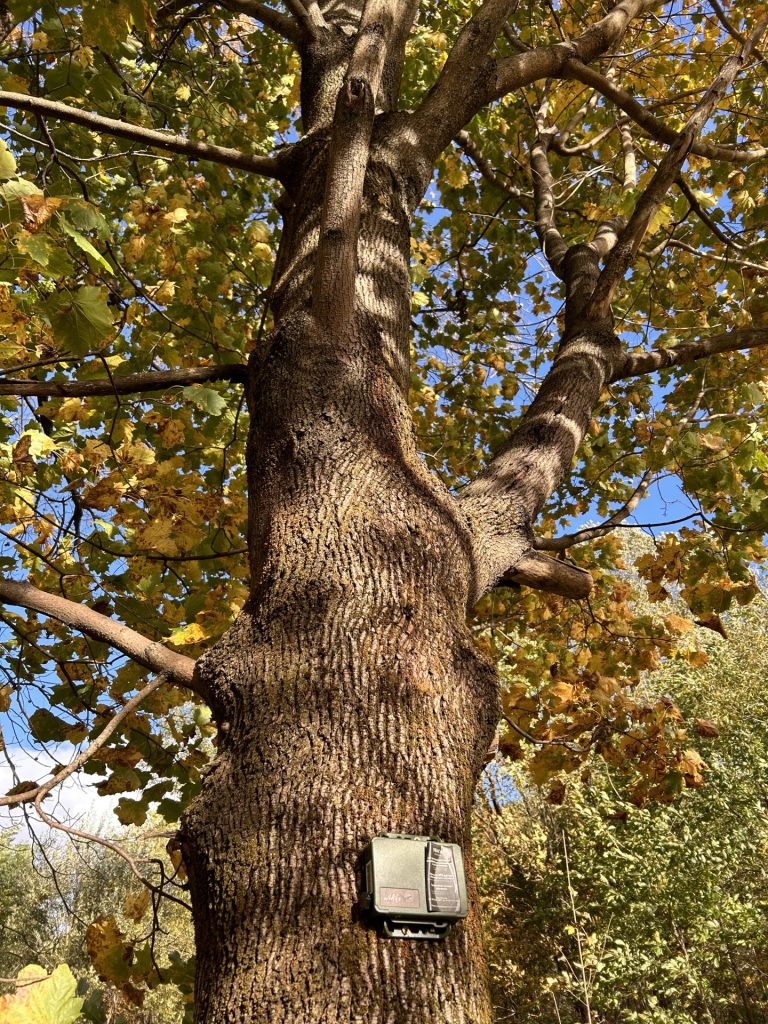Bat monitoring in the Skolivski Beskydy National Park
In this article, we tell you why the Frankfurt Zoological Society supports bat monitoring, what benefits these observations bring to nature conservation institutions, how the monitoring is carried out, and what role bats play in the Carpathian ecosystems and in human life.
Why does the Frankfurt Zoological Society support bat monitoring? What is the role of bat monitoring in the conservation activities of national nature parks?
Ira Shpakovska, Biodiversity Monitoring Coordinator:
Since we are striving to introduce a holistic monitoring system that will cover ecosystems, not just individual species, bats are very important to us. They are one of the indicators of virgin forests, old-growth forests. Monitoring of bats will help us to draw a picture of virgin forests, old-growth forests or other priority natural values (beech forests, fir and spruce forests, and oak forests). After all, if we observe the activity and species diversity of bats, it means that there are enough habitats for them. When it comes to forest ecosystems, old-growth forests with hollows are these habitats.
In bat observations and biodiversity monitoring in general at the Frankfurt Zoological Society, we follow these principles:
Why is bat monitoring in the national park important?
Ivan Lepesevych, Head of the Forestry and Ecosystem Restoration Department of the Skolivski Beskydy National Nature Park :
Bats have chosen the territory of the national park, and we are glad that we have a suitable environment for them.
Bat monitoring started in the Park in 2015. During this period, we have monitored the entire territory of the national park, identified 2 stationary areas where we have been monitoring for the last 2 years. Large amounts of data were collected and processed, and about 20 species were identified. We record the data in the chronicle of nature, so we already have some dynamics over these 9 years.
The main tools for monitoring bats are batcoders – acoustic devices for monitoring bats. This is an expensive equipment that was given to us by the FZT.
How does a batcoder work?
I.L.: We set up the batcoder using the app on the phone. We set the time when the batcoder turns on (it is the period of twilight, immediately after sunset) and when it turns off (immediately after sunrise). Such stationary background monitoring of bats takes place from early spring (spring migration period), during the summer (breeding season) and lasts until late fall (autumn migration period).
We have determined that for a stationary placement of such an acoustic receiver, it is necessary to replace the memory cards on a weekly basis, as a lot of information is accumulated. There is also a separate SMART protocol for installing, checking, and removing the batcoder to maximize the automation of data entry.
What data does bat monitoring provide?
Andriy-Taras Bashta is a leading researcher at the Institute of Carpathian Ecology of the National Academy of Sciences of Ukraine. He specializes in vertebrates (including bats). He also works at the Skolivski Beskydy National Nature Park.
Bats are an important component of any ecosystem, including forests. All bats in Ukraine are listed in the Red Data Book.
Accordingly, the national park, as an institution designed to protect nature, is also engaged in the protection of bats.
In late summer and early autumn, the autumn migration of migratory bat species takes place: they fly south to spend the winter and return in spring. Autumn monitoring shows which bats migrate through our territory, and assesses the scale and timing of migration. Thanks to observations, we can identify important habitats for bats, find out why they are important and what environmental elements are necessary for bats.
About 30 species of bats have been found in Ukraine, 24 species in the Carpathians. We distinguish 3 groups of bats according to their migration status:
How do bats help conservationists preserve ecosystems?
A.-T. B.: There is a term called ecosystem services. And bats are huge providers of such services for humans.
First of all, they hunt insects that spoil wood (woodworms, various kinds of beetles and their larvae). These are mostly nocturnal insects, and bats are their main consumer. Therefore, bats are assistants for foresters, as they help to preserve the forest. Bats also exterminate insect pests of agricultural plants by hunting over fields.
What are bat boxes and why are they needed?
A.-T. B.: Bats, like many other animals, exist in a situation where there is much more food than places to settle. In national parks, the situation with housing is easier, because there are areas of varying degrees of conservation and protection, and therefore there are many old-growth trees with hollows and cracks suitable for bats to settle.
Where there is less natural “housing”, it is advisable to hang out bat boxes. In such boxes, the bat can rest during migration, as well as on the way from the place where it lives to the place where it feeds, and thus saves energy. The ratio of energy expenditure to energy intake from food is especially important for brood colonies, i.e. females feeding their young.
Do you work at night to study bats?
A.-T. B.: It depends on the task. It is possible to search for colonies during the day, especially in attics, indoors, or in the dungeon. But to study the level of activity of bats, species composition of the area, their biotopic connectivity and biotopic preferences – this is where we have to work at night with a handheld or stationary detector. Often we use so-called transect surveys: when a researcher moves along a transect (a research path) and records all the bats that fly there. And then we use a computer program to analyze the voice recordings.
Are bats safe for humans?
A.-T. B.: Let’s start with the fact that one bat can eat from 500 to 3,000 mosquitoes per night. That is, the more bats around, the fewer mosquitoes in the air. That’s how useful they are for humans!
Instead, bats are said to be dangerous bloodsuckers. Yes, there are 3 species of bats in the world that feed on blood. But they live in South and Central America, i.e. on the other side of the globe! We are separated by tens of thousands of kilometers.
The second myth is about bats getting tangled in hair. Theoretically, if the ultrasound that helps a bat navigate in the air is lost in voluminous hair (rather than reflected), the animal may not identify the obstacle and, flying low overhead, hit the hair with its wing. But if the bat does fly close to a person, it is because it is hunting for a midges, which also fly close to a person as a source of heat.









